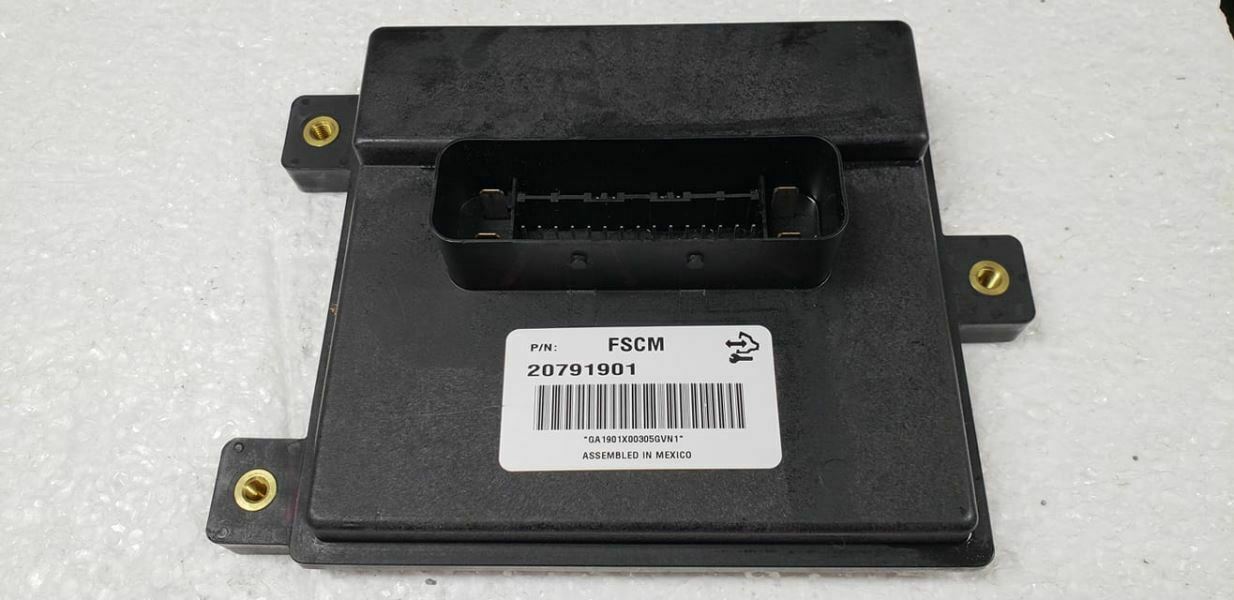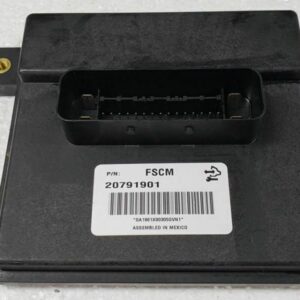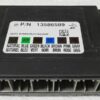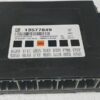Restore Your GM’s Performance and Reliability
If your 2013 Chevrolet Avalanche 1500 is experiencing frustrating issues like engine stalling, a long crank time before starting, or a complete no-start condition, a failing Fuel Pump Control Module (FPCM) is a very common culprit. As a mechanic with over two decades of experience under the hood of these GM trucks, I’ve seen this exact problem countless times. The FPCM, also known as a Fuel System Control Module (FSCM), is the brain that tells your fuel pump how much pressure to deliver. When it fails, your engine is starved of fuel, leading to unpredictable and unsafe performance.
This isn’t just a replacement part; it’s a complete, ready-to-install solution. We take a genuine GM module and flash it with the very latest vehicle-specific software directly from GM. By providing your Vehicle Identification Number (VIN) at checkout, you receive a part that is 100% plug-and-play. This eliminates the need for an expensive trip to the dealership or specialized programming tools, saving you significant time and money. This is the definitive fix for a faulty 2013 Avalanche 1500 Fuel Pump Control Module.
Case Study: A Tricky Diagnosis
A 2013 Silverado came into my bay with an intermittent stalling problem that had two other shops stumped. The owner had already replaced the in-tank fuel pump, but the issue persisted. When I connected my scanner, I found a stored U0109 code—’Lost Communication With Fuel Pump Control Module.’ Instead of throwing more parts at it, I went straight to the FPCM on the driver-side frame rail. It showed signs of corrosion from road salt and moisture. We installed one of our pre-programmed modules, and the truck fired up instantly with perfect fuel pressure. The customer saved hundreds by avoiding another unnecessary fuel pump job.
Is Your GM Truck or SUV Showing These Signs?
A failing FPCM can manifest in several ways. If you’re noticing any of the following, this module is the likely solution.
- ✔ Check Engine Light is on with specific diagnostic trouble codes (DTCs). Common codes include U0109, P069E, P0230, and P025A.
- ✔ The engine cranks but will not start.
- ✔ The vehicle starts but stalls immediately or while driving.
- ✔ Hesitation or stumbling during acceleration.
- ✔ Reduced engine power and poor fuel economy.
- ✔ An audible buzzing or whining from the fuel pump area that is inconsistent.
A Straightforward Guide to Installation
Installing your new 2013 Avalanche 1500 Fuel Pump Control Module is a job most DIYers can handle with basic tools. On most compatible trucks and SUVs, the module is located on the driver-side frame rail, making access relatively simple.
- Safety First: Disconnect the negative terminal from your vehicle’s battery to prevent any electrical shorts.
- Locate the Module: Find the FPCM mounted to the vehicle’s frame, typically on the driver’s side near the spare tire or just ahead of the rear axle.
- Disconnect Connectors: Carefully press the release tabs and unplug the electrical connectors from the old module. Inspect them for any corrosion or damage.
- Remove Old Module: Unbolt the old module from the frame. These bolts can sometimes be rusty, so a little penetrating oil can help.
- Mount New Module: Bolt the new, pre-programmed module securely in place.
- Reconnect Everything: Plug the electrical connectors firmly into the new module. Reconnect the negative battery terminal.
- Start the Vehicle: Your vehicle should now start and run correctly with stable fuel pressure. No further programming is required.
Verified Vehicle Compatibility
This module, part number 20964304 (also compatible with 20964305), is a direct-fit replacement for a wide range of GM vehicles. Please verify your model and options below.
- Acadia: 2013-2014 (at rear crossmember)
- Avalanche 1500: 2013 (LH frame rail, w/o integrated trailer brake control)
- CTS: 2013-2015 (Coupe, Sedan, SW – check specific options)
- Enclave: 2013-2014 (at rear crossmember)
- Escalade / ESV / EXT: 2013-2014 (LH frame rail, w/o integrated trailer brake control)
- Express 1500 Van: 2013-2014 (LH frame rail)
- Impala / Impala Limited: 2013-2016 (RH rear quarter panel)
- Savana 1500 Van: 2013-2014 (LH frame rail)
- Sierra 1500 / Denali 1500: 2013 (LH frame rail, w/o integrated trailer brake control)
- Silverado 1500 Pickup: 2013 (LH frame rail, w/o integrated trailer brake control)
- Suburban 1500: 2013-2014 (LH frame rail, w/o integrated trailer brake control)
- Tahoe: 2013-2014 (LH frame rail, w/o integrated trailer brake control)
- Traverse: 2013-2014 (at rear crossmember)
- Yukon / Yukon XL 1500: 2013-2014 (LH frame rail, w/o integrated trailer brake control)
Frequently Asked Questions
Why do I need to provide my VIN?
Your VIN is essential for us to program the module with the exact software calibration for your vehicle’s specific configuration. This ensures perfect compatibility and function right out of the box, just like a part from the dealer, but without the hassle.
Is this part difficult to install?
For most trucks and SUVs like the Avalanche, Silverado, and Tahoe, the installation is straightforward. The module is typically mounted on the outside of the frame rail. With basic hand tools, it’s a job many of our customers successfully complete in their own driveway.
Will this fix a U0109 Check Engine code?
Yes, the DTC U0109 (‘Lost Communication with Fuel Pump Control Module’) is one of the most common codes indicating a failed FPCM. Replacing the faulty module with this pre-programmed unit is the correct repair for this code.
What is the difference between an FPCM and a fuel pump?
The FPCM is the electronic controller (the brain), while the fuel pump is the mechanical part (the muscle) inside your gas tank. The FPCM tells the fuel pump how fast to run. Often, the FPCM fails while the pump itself is still good, making this module a cost-effective first step in diagnosis.
Is this part compatible with part number 20964305?
Yes, this module is a direct, compatible replacement for both 20964304 and 20964305 part numbers. We will ensure it is programmed correctly for your vehicle regardless of the original part number.



